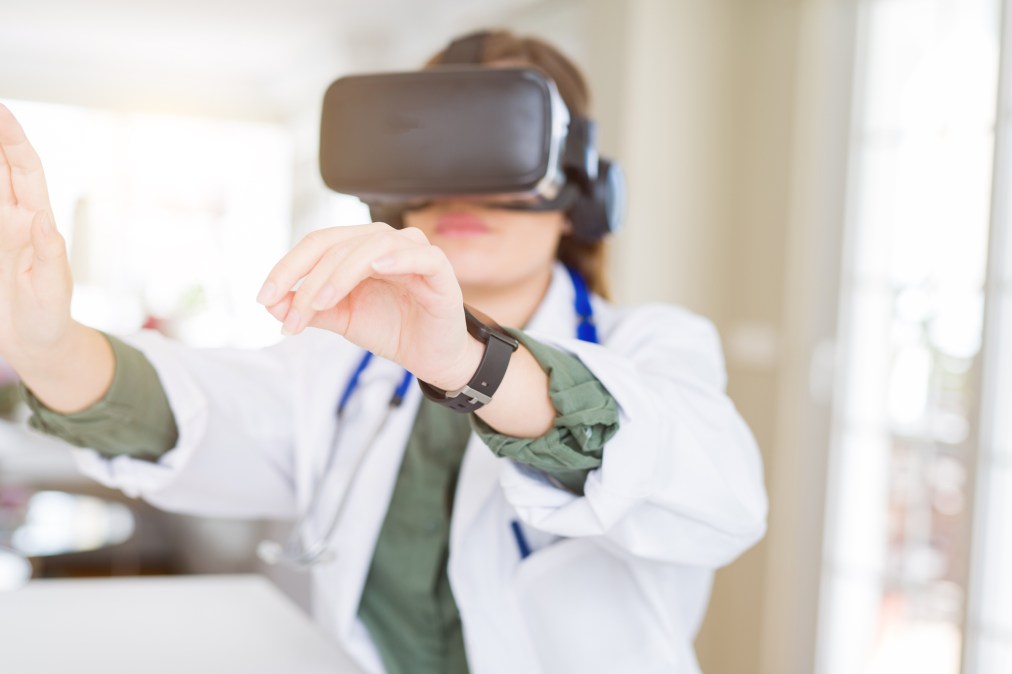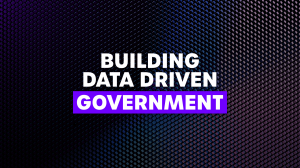AR and VR can transform government work beyond the pandemic — if done right

The COVID-19 pandemic is transforming the “future of work” from a high-level thought experiment into a daily reality. Employers are still scrambling to realize visions of a digitally connected, networked workforce that seemed like a distant future just a year ago. While videoconferencing, cloud computing, and other technologies have played an important role in realizing this vision, more and better innovations are needed as virtual work becomes the new reality rather than a short-term fix.
Augmented reality and virtual reality (AR/VR) — immersive technologies that enable users to experience digitally rendered content in both physical and virtual space — have the potential to meet these immediate needs and transform the way businesses, nonprofits, and government organizations work going forward.
The need for such a transition is especially evident in the federal government. Not only are a significant number of federal employees working from home, but restrictions on travel, in-person meetings, and public gatherings limit the day-to-day functions and skill-building capacity of federal agencies.
AR/VR can bring virtual and in-person work together in ways that less immersive technologies never could. With AR, users can introduce virtual elements such as directions or three-dimensional objects to their physical environment, while VR fully immerses them in a virtual environment like a classroom or conference hall. These capabilities are well suited to meet the needs of federal workers operating in a virtual capacity. AR/VR can enable colleagues to meet face-to-face from their living rooms, simulate hands-on scenario trainings, and facilitate virtual services such as health care and emergency response.
The most well-known examples of AR/VR come from historically high-tech arenas such as national defense or space flight, with Air Force pilots training on complex VR simulators and NASA technicians replacing thousand-page manuals with real-time AR instructions. But the potential uses expand across government functions from emergency management to direct service provision.
Achieving this widespread use will require investment in new resources for the digital workforce. Many potential use cases, such as AR-based training, are possible with smartphones, tablets, and personal computers. But fully immersive experiences, such as virtual gatherings or simulations, will require specialized hardware like headsets. Similarly, while existing AR/VR services already offer basic capabilities like virtual meeting spaces or training scenarios, specific applications will require customized software as well as content.
Such investments in AR/VR are more than just a stopgap solution to the immediate challenges of collaboration, skill-building, and public interactions in a newly virtual workforce. AR/VR can expand federal workers’ potential well into the future by enhancing both their long-term professional development and their day-to-day operational efficiency. But in order to effectively implement AR/VR solutions, federal agencies need to understand the technological possibilities—and limitations—of specific use cases.
With the urgent need to pivot to more flexible work and professional development arrangements, now is the time to begin adopting AR/VR technologies at scale in the federal workforce. Because this is a relatively new and rapidly changing technology, it is important that implementation plans allow for exploring new use cases safely and responsibly.
One approach is outlined in the VR TECHS in Government Act. There has been no action on this bill since Rep. Yvette Clarke (D-NY) introduced it last year, but the shifting circumstances of a pandemic workforce lend a new sense of urgency to the proposal.
The act would establish a multi-sector advisory committee “to promote the use of reality technology as a tool for professional development for Federal workers, and for other purposes.” Rather than lay out rigid parameters for the use of AR/VR in the federal workforce, this legislation offers a foundation to explore the possibilities of these technologies in a government context, share best practices across agencies, and determine whether and how to integrate these tools into existing operations and trainings.
Such an advisory committee would be a beneficial first step in introducing AR/VR solutions across the federal workforce. Input from members representing the technology industry, academia, and multiple government agencies would ensure any new uses unlock the current and future potential of AR/VR, meet the actual needs of federal employees, and include preventative measures to proactively address misuse and safety concerns. It can also adapt recommendations to address unforeseen circumstances—like a global pandemic that moved most federal employees to telework overnight.
The future of work is here, and the federal government should adapt. AR/VR technologies can help address immediate concerns about staffing, training, and service provision during a global pandemic, while also positioning the federal workforce to excel in a dynamic and increasingly networked environment. By introducing mechanisms to continually grow and adapt the use of AR/VR for professional development, service provision, collaboration, and other functions now, federal employees will be better equipped to participate in the workforce of the future.
Ellysse Dick is a research fellow at the Information Technology and Innovation Foundation (ITIF), the leading think tank for science and technology policy.






